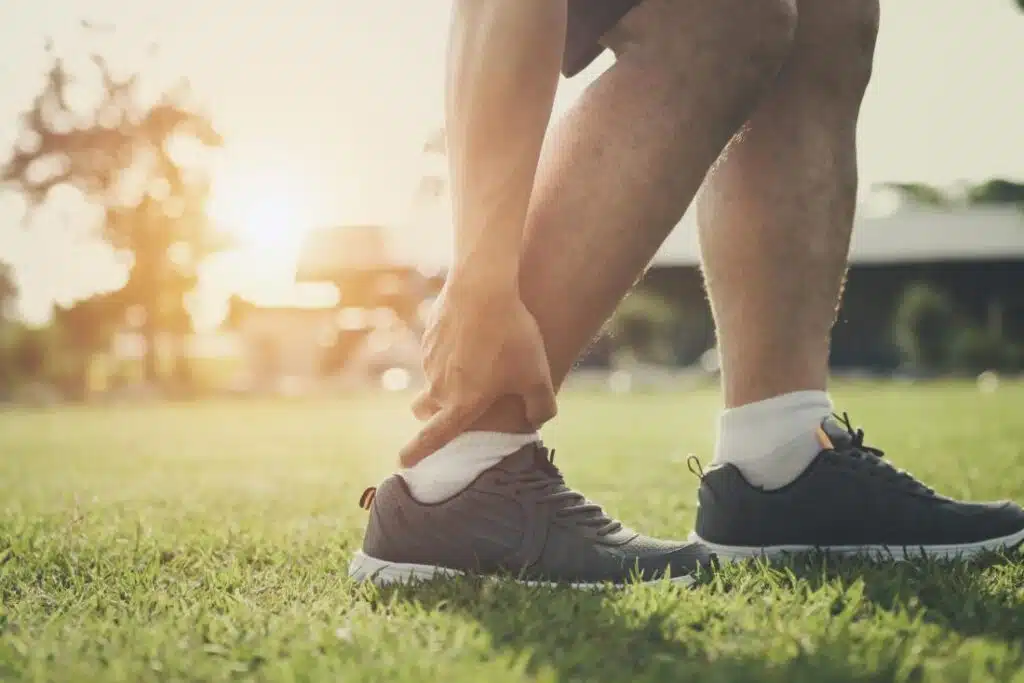
Transportation Security Administration (TSA) officers perform physically demanding work daily, including repetitive heavy lifting, prolonged standing, and ensuring safety at security checkpoints. These tasks can lead to various physical strains and injuries, necessitating long-term treatment to continue performing their job effectively.
In this blog, we will explore the top five common injuries TSA officers face and how chiropractic care can be an ideal treatment to manage and prevent them.
Due to the physically demanding nature of their job, lower back pain becomes one of the most common injuries TSA officers face.

Baggage handlers and airport screeners are prone to musculoskeletal disorders due to prolonged standing, frequent bending, repetitive lifting, high stress, restricted movement, twisting motions, and often poor ergonomics.
Symptoms of lower back pain may include
Without sufficient rest, they put significant stress on the lower back, straining the muscles, compressing spinal discs, and disrupting alignment. These factors become a problem when they lead to persistent discomfort.
Chiropractic adjustments can help treat this work-related injury by realigning the spine. Spinal adjustments target misalignment caused by repetitive motions, reducing inflammation and restoring mobility.
Aside from spinal adjustments, chiropractors may incorporate soft-tissue therapy for back pain relief for TSA officers. It involves techniques such as massage therapy or myofascial release to loosen and relax muscles and tissues causing pain.
TSA officers also receive ergonomic advice, including a comprehensive guide on proper lifting techniques and posture corrections. These non-invasive treatments not only alleviate current pain but also prevent future injuries.
Hand and finger injuries are common in aviation industries, with officers often getting injuries from sharp objects in luggage. TSA has among the highest injury rates in the Federal government, ranking 8th with at least 1,813 illnesses and injuries in 2017.

Constant use of handheld scanners and X-rays and inspecting passenger luggage requires repetitive hand and finger movements, which can lead to overuse and strain injuries.
Symptoms of hand and finger injuries include
Such symptoms significantly affect their performance, particularly reducing grip strength, which makes it difficult to perform simple tasks. Left unaddressed, they could lead to a chronic condition like carpal tunnel syndrome.
Chiropractic care for TSA officers can address hand and finger injuries with targeted adjustments and therapeutic exercises. By focusing on the joints and soft tissues of the wrist and hand, chiropractors can help alleviate pressure on the nerves.
Ergonomic advice can also recommend proper hand positioning when handling machines. By combining hands-on treatments with personalized advice on ergonomics and self-care, chiropractic care offers a holistic approach to managing and preventing hand and finger injuries.
Knee pain is common among TSA officers, stemming from the physical demands of prolonged standing, walking, and heavy lifting. It's prevalent across the aviation security and transportation industry.

Prolonged standing, walking, and heavy lifting can lead to knee pain. Conditions such as patellar tendonitis and knee bursitis are common among TSA officers. These conditions develop from overuse and strain on the knee joints, especially when there’s little opportunity to rest or change positions during long shifts.
Symptoms of knee pain include dull or sharp pain in the front or sides of the knee, swelling, stiffness, and difficulty bending or straightening the knee. Those suffering from these symptoms may find climbing stairs, squatting, or even sitting challenging.
Chiropractic adjustments can alleviate knee pain by realigning the joints and improving overall posture. Misalignment in the spine or hips could contribute to improper weight distribution, putting extra pressure on the knees.
Luckily, chiropractic care relieves stress on the knee joints, reduces inflammation, and restores mobility by addressing such misalignments. Chiropractors often incorporate strengthening exercises to support the muscles around the knee, improving stability and reducing the risk of injury.
Shoulder pain is another common injury in physically demanding jobs that require repetitive movements, and TSA officers are no exception.

Using arms to scan, lift, and move items frequently can strain the shoulders and joints significantly, leading to pain and discomfort. When left unchecked, these symptoms often lead to shoulder impingement syndrome or rotator cuff injuries.
Symptoms of shoulder pain include discomfort in the front or side of the shoulder, weakness when lifting or rotating the arm, and difficulty reaching overhead. These conditions make it difficult to perform routine tasks.
Comprehensive chiropractic care performs soft tissue therapies and joint adjustments to manage shoulder pain. These treatments can address neck, shoulder, and upper back misalignments to reduce inflammation, alleviate muscle tension and pain, and improve mobility.
Chiropractors may also recommend rehabilitative exercises to strengthen the rotator cuff muscles and provide ergonomic guidance to prevent shoulder strain.
Transportation Security Administration officers usually spend most of their day standing, walking, and moving around. Unsurprisingly, ankle and foot pain are among the most common issues they face.

Ankle and foot pain often stems from conditions such as Achilles tendonitis, plantar fasciitis, and ankle sprains. Poor footwear, repetitive strains, and long hours of standing on hard surfaces also actively contribute to these injuries.
Common symptoms of ankle and foot pain are tenderness, swelling, sharp pain, and discomfort in these areas. This condition makes it difficult to walk and stand for long periods, limiting an individual’s ability to perform daily tasks.
Chiropractic adjustments can effectively manage ankle and foot pain symptoms. Proper alignment reduces the strain on these areas, reducing pain and enhancing movement. Meanwhile, soft tissue therapies reduce tension and inflammation in the muscles and ligaments.
Chiropractic care provides a non-invasive, holistic solution to ankle and foot pain, allowing TSA officers to be more comfortable and active throughout their rigorous shifts.
As security professionals, TSA officers must prioritize their health before safeguarding others. By taking care of themselves first, they ensure they can perform at their best and offer travelers the highest level of protection.
Chiropractic care offers a practical, non-invasive solution for managing and preventing these injuries. At Zaker Chiropractic Pain & Wellness Center, we aim to help TSA officers recover and return to work. We won't let these common injuries TSA officers face interfere with their crucial duties.
Book an appointment today, and let’s start planning for a pain-free future.
